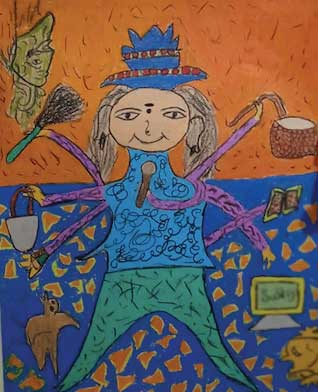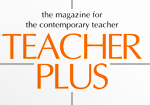Lakshmi Karunakaran
This is a unique time in the history of the world and India. As you read this article, lakhs of children across the country are returning to schools and to physical classroom spaces after over a year and a half. The COVID-19 pandemic brought the education system of India to a near halt. What followed was a patchy, sometimes even haphazard, method of coping with the challenges that the situation brought about – online/distant learning became the most sought out, if not the only, method of teaching and learning given the tremendous uncertainty and stress that the education systems had to deal with. It laid bare the huge digital divide, or rather the ‘digital ditch’ that existed in the country.

At the library situated in a community of wastepickers in South Bangalore where I work, I asked a 10-year-old girl, Sangeetha*, which class she would be going back to when school reopened. She first took some time to understand the question, then she responded slowly, “I don’t know.” She goes to the local government school and has never been a part of the online classes. The only smart phone in the family is with her father, she said. And he goes to work. I probe her about what she did during the last year and a half. Housework she responds – cleaning, cooking, taking care of siblings and carrying and transporting water. “Hundreds of buckets of water,” she smiles. Her mother has had to go back to work wastepicking, her older siblings are also working, so she oversees everything at home. Sangeetha’s is not a standalone story. This is the story of lakhs of children across the country today.
A recent survey, Locked Out – Emergency report on school education, reveals the catastrophic effects of prolonged school closures in the last year and a half – in rural areas only 8% of sample children (1400) are studying online regularly, 37% are not studying at all, and about half are not able to read more than a few words. Most parents want schools to reopen as soon as possible. Another report by Azim Premji University corroborates the dismal situation. On average, 92% of children have lost at least one specific language ability from the previous year across all classes. About 82% of children on an average have lost at least one specific mathematical ability from the previous year across all classes.
Many other reports suggest of social and emotional regression among children due to limited social interactions and of the trauma they faced during the pandemic. Others have fallen on their nutritional indices – no schools means no access to mid-day meals. Children have gone through tremendous amount of psychological stress during the COVID-19 pandemic. The looming fear of the infection, loss of family members, not having access to their friends and teachers, forced migration, domestic and child abuse and so on. The traffic on Childline India helpline is in some way indicative of the distress that children experienced. The helpline received more than 92,000 SOS calls asking for protection from abuse and violence in the first 11 days of the lockdown in 2020.
Bringing focus on safety, health and well-being in schools
One thing is for sure, much has shifted in the children who will walk back into our schools. While each of these reports point to the various aspects of regression in children – academic, social, nutritional, cognitive, emotional and so on, it is important that the schools create a more holistic framework to tackle the situation. There is much that the schools need to be prepared for – having school infrastructure back to a working state, readjusting back into classroom life for teachers and students and confronting the academic and social regression that many children have faced over the past year and a half. However, another critical aspect that schools can no longer ignore is the overall health and well-being of the child – cognitive, social and emotional. The pandemic has brought focus on health and hygiene and its importance more from the need for prevention of infection, but what has over time gone unnoticed is the focus on the overall well-being of the child and how that is linked to the capacity to build immunity and remain healthy. Also, more importantly – building safe environments for children to understand how they can in turn create the circumstances for healthy learning. If a child who is already vulnerable does not find safe spaces and is berated and mocked and forced to learn, retention of the child is going to be under great threat. There is an immediate and urgent need for schools to reimagine their environments and teaching and learning processes. Now is the time for schools to move away from looking at sports, arts and culture as just being extracurricular and bring it centre stage to address the overall growth and health of a child.

As a library educator, I feel libraries can play an important role in binding the different aspects of a child’s growth – especially the cognitive, emotional and social. Stories can help acquire insight into the characters’ thoughts, feelings and actions in relation to a particular issue and even experience catharsis (the release of pent-up feelings) upon the realization that they are not the only ones who have this problem. It can help explore other possible ways of working out their own problems by seeing how the characters handled problems themselves and how their actions or words played out and share personal experiences as a natural progression of discussion#. Arts based extension activities after reading a book can provide opportunities to bring alive a story and internalize it to create and build personal narratives that help in the process of unpacking difficult experiences, making sense of it and in the process heal.
Self-care for educators
The pandemic has had adverse effects on teachers and educators, both personally and professionally. It’s impossible for them to be effective if their own physical and mental health and needs are not addressed. An important aspect to addressing stress and anxiety is self-care. Self-care is any activity that we do intentionally in order to take care of our mental, emotional and physical health. Although it sounds very simple, it is something that can generally be overlooked or neglected. Good self-care routines are key to an improved mood and reduced anxiety and hence better effectiveness in classrooms. A self-care activity can be as simple as taking the time to enjoy a cup of tea, listening to your favourite music, or going out for a walk.
As schools prepare to dive in and make up for lost time and play academic curriculum catch up, there is a need for collective acknowledgement and healing. More than ever before, now is the time for the education systems and schools to place the child at the center of their work and create inclusive, open spaces for everyone to heal, learn and grow.
Note: The two artworks depicted here came out of an arts-based therapeutic session at the library the author works, as a part of addressing the different issues that children faced during the pandemic. The pictures depict self portraits of children and reflect on their lives during the pandemic.
| From UNICEF’s Ready to come back: Teacher preparedness Training package Well-being: This is more than just how we feel physically. The way we feel emotionally and mentally are also part of our overall well-being. Physical well-being affects emotional well-being and vice-versa. People react to stress in different ways. Being aware of how you react to stress and the interaction between different aspects of well-being is an important step towards managing our well-being. Health: Health is more than the absence of disease; it is the overall condition that allows you to realize your aspirations, satisfy your needs and cope with your environment in order to live a fruitful life. Health can be improved through the following means: physical activity, a healthy and balanced diet, meaningful social interactions, developing a positive attitude and autonomy. Mental health: This refers to a state of well-being in which you realize your own potential, can cope with the normal stresses of everyday life, can work effectively, and are able to make a contribution to your community. Stress: Stress is a normal response to a challenging physical or emotional situation. It can come from an event that makes you feel frustrated, angry or anxious. Toxic stress is your body’s reaction when demands are greater than your resources for coping. Distress: State of being upset, anxious, in sorrow or pain. It can occur in response to difficult living conditions, such as poverty or exposure to threats to one’s security or well-being. Signs of stress: This refers to physical, emotional, social, or cognitive reactions to stress. Physical reactions might include feeling tired, frequent headaches, or experiencing high blood pressure. Emotional reactions might include becoming angry, irritable, fearful, or sad more easily. Social reactions might include increased self-isolation or getting into arguments with others more easily. Cognitive reactions might include having difficulty concentrating, excessive worrying and increased forgetfulness. Child protection: Involves protecting a child from abuse, exploitation, neglect, and violence, including bullying, cyberbullying and threats. Some children returning to school may have experienced or witnessed increased violence while under quarantine, such as emotional, physical, or sexual and gender-based violence and abuse. Teachers need to be aware that not all children have had a safe quarantine experience. Psychological first aid (PFA): Psychological First Aid is defined as a compassionate and supportive response to someone who is suffering and may need support. The purpose is not to diagnose or provide therapy. It is made up of three steps: look-listen-link. More specifically, it can be broken down as follows: looking for signs of distress, listening actively, and linking students to support services where appropriate and available. Like First Aid, this can be done by anyone who is trained to do it. |
*Name changed
#Ludwig, Trudy. ‘ Using Children’s Literature to Build Social-Emotional Skills. Sept 24, 2018
The author is an educator based in Bangalore. She can be reached at lakshmikarunakaran@gmail.com.
Related Article
